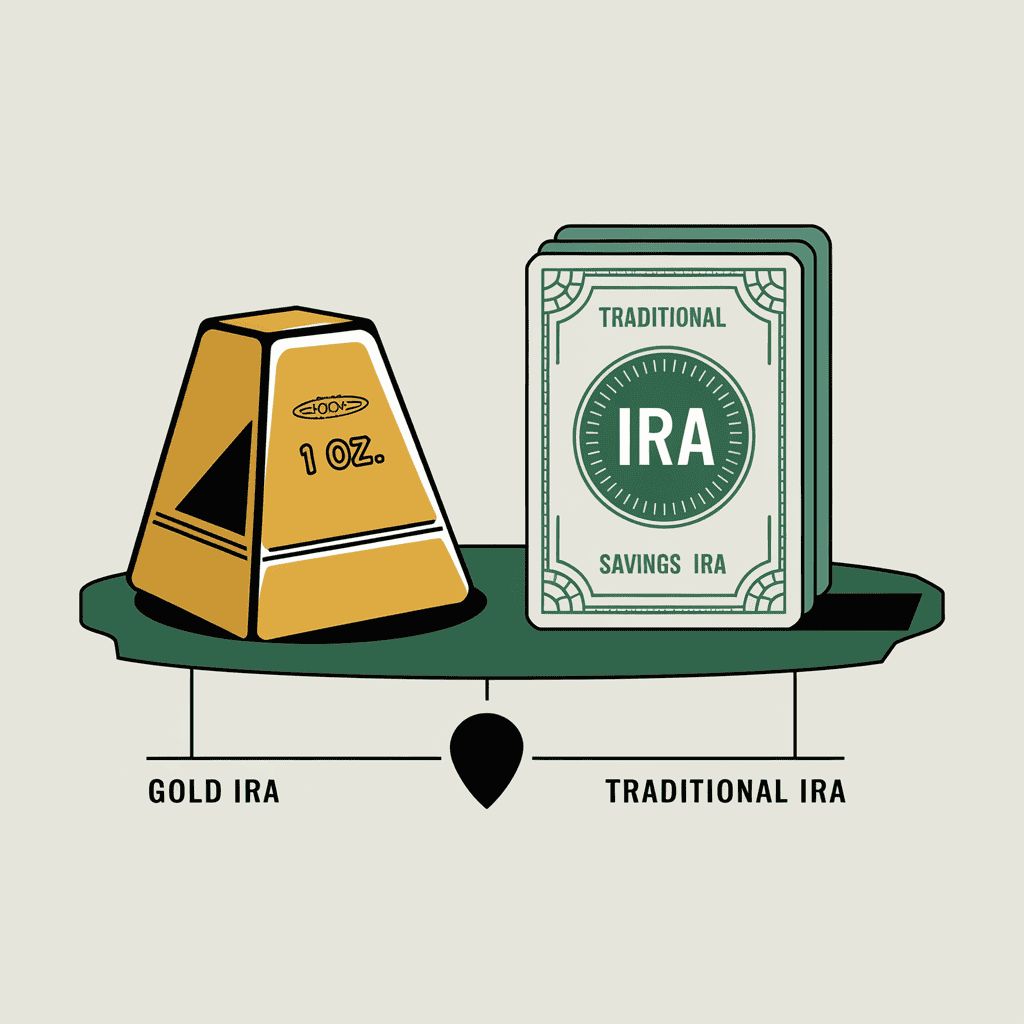When planning for retirement, selecting the appropriate investment vehicle is crucial to ensure financial stability. Two popular options are a Gold IRA (Individual Retirement Account) and Traditional retirement accounts, such as Traditional IRA and Roth IRAs. Each offers distinct advantages and disadvantages that cater to different investment strategies and risk appetites. This article provides a comprehensive analysis to help you determine which option aligns best with your retirement goals.

Gold IRAs
A Gold IRA is a self-directed retirement account that allows investors to hold physical gold and other approved precious metals. Unlike conventional IRAs, which typically invest in stocks, bonds, and mutual funds, Gold IRAs focus on tangible assets.
Advantages:
- Inflation Hedge and Diversification: Gold has historically served as a hedge against inflation and a means of diversifying investment portfolios. Its value often moves independently of traditional financial markets, providing a buffer during economic downturns.
- Tax Benefits: Similar to traditional IRAs, Gold IRAs offer tax-deferred growth, allowing investments to appreciate without immediate tax liabilities.
Disadvantages:
- Higher Fees and Storage Costs: Investing in physical gold entails additional expenses, including storage and insurance fees, which can be higher than those associated with traditional IRAs.
- No Passive Income: Unlike dividend-yielding stocks or interest-bearing bonds, physical gold does not generate passive income. Returns are realized only through the appreciation of the asset’s value.
- Liquidity Concerns: Converting physical gold into cash can be more complex and time-consuming compared to selling traditional investments, potentially posing challenges during urgent financial needs.
Traditional Retirement Accounts
Traditional retirement accounts, including Traditional and Roth IRAs, are designed to facilitate long-term savings through investments in financial instruments like stocks, bonds, and mutual funds.
Traditional IRAs:
- Tax-Deferred Growth: Contributions may be tax-deductible, reducing taxable income in the contribution year. Taxes are paid upon withdrawal during retirement, ideally at a lower tax rate.
- Required Minimum Distributions (RMDs): Account holders must begin taking RMDs starting at age 73, ensuring that funds are withdrawn and taxed over time.
Roth IRAs:
- Tax-Free Withdrawals: Contributions are made with after-tax dollars, but qualified withdrawals, including earnings, are tax-free, beneficial if you anticipate a higher tax rate in retirement.
- No RMDs: Roth IRAs do not require minimum distributions, allowing the account to grow tax-free indefinitely, which can be advantageous for estate planning.
General Considerations:
- Contribution Limits: For 2024 and 2025, the maximum contribution across all IRAs is $7,000 annually, or $8,000 for individuals aged 50 and above.
- Income Limits: Eligibility for Roth IRA contributions phases out at higher income levels, whereas Traditional IRAs have deductibility limits based on income and participation in employer-sponsored retirement plans.
Comparative Analysis
- Risk and Volatility: Gold IRAs provide a safeguard against market volatility and inflation but lack the growth potential of equities. Traditional retirement accounts offer exposure to a broad range of assets, which may yield higher returns but are subject to market fluctuations.
- Fees and Expenses: Gold IRAs typically incur higher fees due to storage and insurance costs. Traditional IRAs generally have lower fees, especially when invested in low-cost index funds.
- Liquidity: Traditional IRAs offer greater liquidity, with the ability to quickly sell investments like stocks or bonds. Gold IRAs involve physical assets that may take longer to liquidate.
- Tax Implications: Both account types provide tax advantages, but the timing and nature of tax benefits differ. Traditional IRAs offer immediate tax deductions, whereas Roth IRAs provide tax-free withdrawals. Gold IRAs follow the tax treatment of Traditional or Roth IRAs, depending on the account setup.
Conclusion
Choosing between a Gold IRA and a Traditional IRA depends on individual financial goals, risk tolerance, and investment preferences. Gold IRAs can serve as a hedge against inflation and add diversification but come with higher costs and lack passive income. Traditional IRAs offer a variety of investment options with potential for growth and income but are subject to market risks. A balanced approach may involve incorporating both types into a diversified retirement strategy. Consulting with a financial advisor can provide personalized guidance tailored to your retirement objectives.
